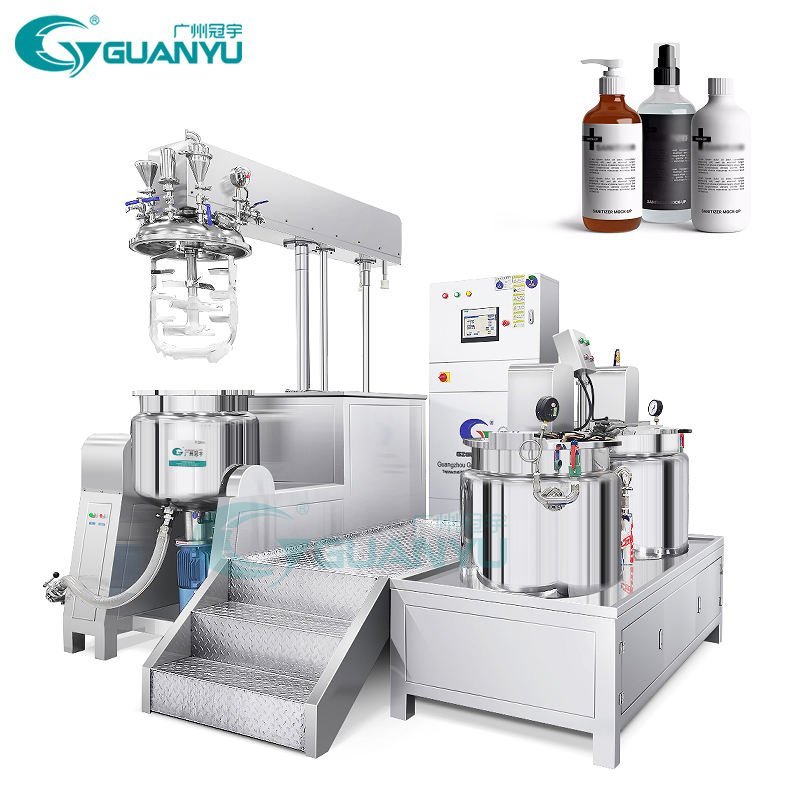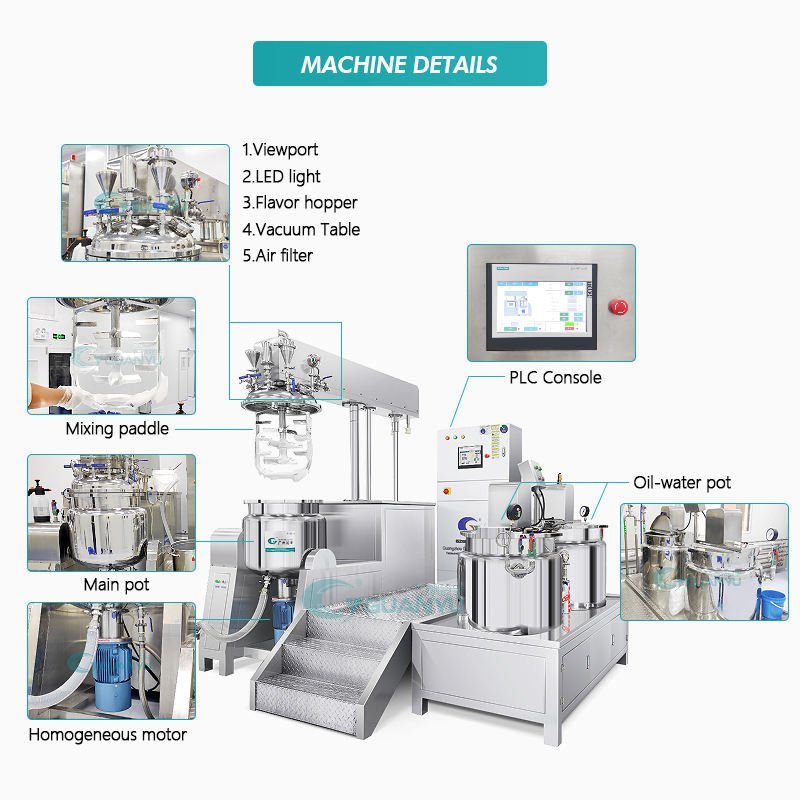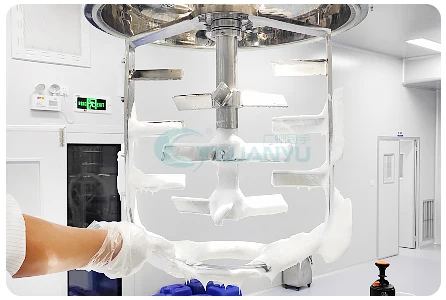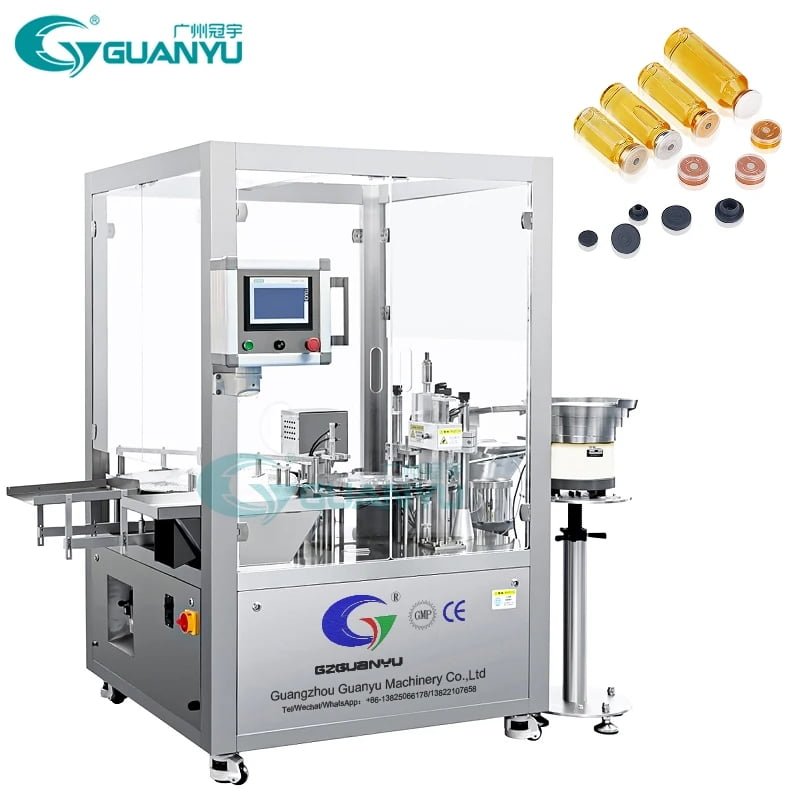
A liquid mixer machine blends or mixes different liquids or combines liquids with powders to create a uniform mixture. You use this equipment to mix materials in many industries, like food, chemicals, and cosmetics. The machine uses mechanical force to stir or agitate the substances until they look the same throughout. You can mix liquids with other liquids, powders, or even thick pastes.
Key Takeaways
A liquid mixer machine blends liquids and powders to create smooth, uniform mixtures used in many industries like food, chemicals, and cosmetics.
Key parts include the mixing vessel, propeller blade and shaft, motor, and control panel, all working together to mix materials efficiently and safely.
Mixing relies on physical principles like turbulent flow and shear forces to break up clumps and ensure even blending for better product quality.
Different mixer types suit different needs: batch mixers for small, flexible jobs; continuous mixers for large, steady production; and high-shear mixers for thick or clumpy materials.
Choosing the right mixer involves considering material compatibility, motor power, safety features, and maintenance needs to improve efficiency and save costs.
Components

Mixing Vessel
You will find the mixing vessel at the heart of every mixer. This container holds the materials you want to blend. Most vessels use stainless steel because it resists rust and is easy to clean. The shape and size of the vessel affect how well the materials mix. Some vessels have special features like jackets for heating or cooling. You may also see vessels with smooth, crevice-free surfaces to prevent contamination, especially in food or pharmaceutical settings.
Propeller Blade and Shaft
The propeller blade and shaft create the movement that mixes your materials. The design of the blade and shaft matters a lot. Propeller mixers use blades that push liquids in an axial direction, creating strong flows and short mixing times. Wide blades use less energy than narrow ones, so you save power while still mixing quickly. The pitch, or angle, of the blade changes how much power you need and how the liquid moves. The shaft can be vertical, horizontal, or even inclined. Sometimes, you will see more than one impeller on a shaft to improve mixing. The way you set up the blade and shaft controls the flow, turbulence, and how well everything blends.
Motor and Drive
The motor gives power to the mixer. You can choose from several types of motors, each with its own strengths. Here is a table to help you compare:
Motor Type | Description | Typical Power Ratings |
|---|---|---|
Electric Motors | Reliable, energy-efficient, most common | |
Single-phase Motors | Cheaper, less powerful | Lower power range |
Three-phase Motors | Powerful, efficient, used in industry | Higher power ratings |
Air-powered Motors | Safe for hazardous areas, use compressed air | Up to 3 HP |
Direct Drive Motors | High-speed, for rapid mixing | Varies |
Geared Motors | More torque, good for thick materials | Power varies |
You must match the motor size to the size of the impeller and the thickness of the materials. For example, a small impeller may need only 0.5 HP, but a large one could need up to 13 HP.
Control Panel
The control panel lets you operate the mixer safely and easily. Modern panels include many safety features:
Overload relays to stop the motor if it gets too hot
Circuit breakers and fuses to protect against electrical faults
Emergency stop switches for quick shutdowns
Interlocks and sensors to prevent unsafe operation
Explosion-proof enclosures for dangerous environments
Tip: Newer control panels often use touchscreens and PLC systems. These let you adjust speed, temperature, and other settings with just a few taps. Some panels even allow remote control and automatic cleaning cycles, making your job easier and safer.
How It Works

Mixing Principles
When you use a liquid mixer machine, you rely on several physical principles to achieve a smooth, even blend. The way fluids move and interact inside the mixer determines how well your materials combine. Here are some key principles that guide the mixing process:
Physical Principle | Description |
|---|---|
Turbulent Mixing | Fast, swirling flows break up clumps and mix materials quickly. |
Laminar Mixing | Smooth, layered flows fold fluids over each other, increasing contact between them. |
Molecular Diffusion | Tiny particles move from areas of high concentration to low, helping to even out the mixture. |
Shear Forces | Blades or high-speed flows pull apart powder clumps, making sure everything dissolves or disperses well. |
You often see these principles at work when mixing powders into liquids. Shear is especially important because it helps break up lumps and ensures powders hydrate fully. High shear mixers can rapidly disperse powders, making your mixture smooth and free of agglomerates. This leads to better batch consistency and higher product quality.
Tip: If you want to avoid clumps in your mixture, choose a mixer that creates strong shear forces.
Mechanical Force and Gravity
The main job of a liquid mixer machine is to move your materials so they blend together. The propeller blade spins, creating a flow that pulls liquid from the top to the bottom of the vessel. This movement relies on mechanical force from the motor and the natural pull of gravity.
The spinning blade creates a strong current, pushing liquid outward and downward.
Gravity helps by pulling heavier particles or droplets down, where the blade can catch and mix them.
The combination of force and gravity ensures that even thick or heavy materials get mixed in.
You can see different mixing patterns inside the vessel:
Mixing Pattern | Description |
|---|---|
Radial Mixing | Liquid moves in circles around the center, evening out temperature and composition. |
Flow Division | Material splits and follows channels made by the mixer’s shape, helping to blend everything. |
Swirl-Flow Phenomena | Swirling flows boost mixing and heat transfer, which is useful in many industrial processes. |
Before you start your mixer, always check the motor insulation and bearings. These safety checks help prevent electrical faults and keep the machine running smoothly. If you skip these steps, you risk damaging the mixer or causing unsafe conditions.
Note: Always follow the manufacturer’s safety checklist before operating your liquid mixer machine.
Jet Pump Technology
Some liquid mixer machines use jet pump technology instead of mechanical blades. In these systems, a high-speed jet of liquid shoots out from a nozzle, creating a low-pressure area that pulls in more fluid. This action mixes the contents quickly and evenly.
Jet pump mixers offer several advantages:
No moving parts inside the tank, so you get less wear and tear.
Energy-efficient operation, since the jet both moves and mixes the liquid.
Handles a wide range of fluid types, from thin to thick.
Prevents settling by keeping particles in motion.
The jet pump works by turning pressure into speed. The fast-moving jet draws in surrounding liquid, and the two streams mix together as they exit the nozzle. This strong circulation keeps everything suspended and ensures a uniform blend. You can use jet pump mixers in many industries, such as chemicals, food, and wastewater treatment.
If you need a reliable mixer with low maintenance, consider a liquid mixer machine with jet pump technology.
Liquid Mixer Machine Types
Batch Mixers
You use batch mixers when you want to mix a set amount of material at one time. You load all ingredients, mix them until they are uniform, and then empty the vessel before starting a new batch. This method gives you control over recipes and lets you make changes for each batch. Batch mixers work well for small-scale production or when you need to switch between different products.
Feature | Batch Mixer | Continuous Mixer |
|---|---|---|
Production Volume | Mixes nonstop, high-volume output | |
Customization | High flexibility, easy recipe changes | Low flexibility, best for one recipe |
Operation Mode | Load, mix, discharge, repeat | Feed in, mix, and discharge at the same time |
Efficiency | Slower, needs downtime between batches | Fast, little downtime |
Human Intervention | Needs manual loading and recipe changes | Runs with little help |
Suitability | Small, varied jobs needing control | Large, uniform jobs needing speed |
Continuous Mixers
Continuous mixers keep working without stopping. You add ingredients at one end, and the mixed product comes out the other. This type suits large factories that need to make the same product all day. You get steady output and save time because you do not stop to reload.
Tip: Choose a continuous mixer if you want high efficiency and do not need to change recipes often.
Static Mixers
Static mixers have no moving parts. Instead, they use fixed shapes inside a pipe to stir fluids as they flow through. You often use static mixers for mixing liquids or gases in a continuous process. They cost less to run, need little maintenance, and last a long time. However, they cannot handle powders or solids.
High-Shear Mixers
High-shear mixers use fast-spinning blades to create strong forces. These mixers break up clumps, reduce particle size, and make smooth blends. You use them for thick materials, fine emulsions, and dispersions. High-shear mixers are common in making paints, creams, and adhesives.
High-shear mixers work best for:
Mixing powders into liquids
Making smooth creams or gels
Breaking down particles for even texture
Jet Pump Mixers
Jet pump mixers use a fast jet of liquid to mix materials. They have no moving parts inside the tank, so they last longer and need less care. You can use jet pump mixers for many types of fluids, from thin to thick. They keep particles moving and prevent settling.
Laboratory Mixers
Laboratory mixers are small and precise. You use them for research, testing, or making small batches. Common types include vortex mixers, rotor-stator mixers, and homogenizers. These mixers are easy to use, clean, and move. They help you test recipes before scaling up to a full liquid mixer machine.
Advantages of laboratory mixers:
Handle small volumes
Offer gentle or strong mixing
Easy to maintain
Give repeatable results
Note: Laboratory mixers help you develop new products and test ideas before moving to large-scale production.
Applications and Benefits
Industries
You will find liquid mixer machines in many industries. Each sector uses different types of mixers for specific tasks. The table below shows where you might use these machines and what they help you achieve:
Industry | Common Mixer Types | Primary Applications |
|---|---|---|
Food & Beverage | High-shear, Planetary, Ribbon | Emulsifying, reducing particle size, blending dough and creams, mixing powders like spices |
Cannabis | High-shear, High-speed dispersers, Multi-shaft | Dispersing cannabis oils, mixing extracts in tinctures and beverages, blending salves |
Pharmaceutical | High-shear, Planetary, Ribbon, V-blenders | Drug formulation, making emulsions and suspensions, blending ointments, creams, and powders |
Chemical Manufacturing | Tank agitators, Static, High-shear, Ribbon, Drum | Mixing liquids, gases, slurries, chemical reactions, blending powders, large batch mixing |
Petroleum (Oil & Gas) | Tank agitators, Static, High-shear, Propeller, Jet nozzles | Stabilizing drilling fluids, refining, reducing viscosity, preventing sludge in storage tanks |
Tip: You can choose a mixer based on your product’s needs, whether you work with food, chemicals, or even cannabis extracts.
Advantages
When you use a liquid mixer machine, you gain several important benefits:
You increase production efficiency. For example, raising the impeller speed by 10% can boost mixing power by 33%. A small increase in impeller size can also improve performance by 28%.
You save money by upgrading existing mixers instead of buying new ones. Simple changes can make your process more efficient.
You improve product quality and consistency. Better mixing means fewer clumps and more uniform results.
You reduce maintenance costs. Durable stainless steel mixers last longer and need fewer repairs.
You lower energy use with advanced designs, such as static mixers and variable-speed drives.
You can handle a wide range of products and batch sizes, making your operation more flexible.
You help the environment by using energy-efficient machines and materials that resist corrosion and wear.
Industry experts expect the market for these machines to grow by 5.2% each year from 2026 to 2033. This growth comes from new technology, changing customer needs, and a focus on sustainability.
Note: Regular maintenance, such as checking fluid levels, lubricating parts, and cleaning, keeps your mixer running smoothly and extends its life.
Choosing a Liquid Mixer Machine
Key Factors
When you select a liquid mixer machine, you need to think about several important points. Each factor helps you match the right mixer to your process and avoid common mistakes.
Material compatibility: Choose materials like stainless steel or titanium if you need corrosion or abrasion resistance. This keeps your mixer safe and long-lasting.
Mixing mechanism and speed: Pick the right impeller or paddle for your material. Adjustable speeds help you mix both thin and thick fluids.
Automation and control: Look for mixers with real-time monitoring and precision controls. These features make your process more reliable.
Energy efficiency: Select machines with energy-saving motors and designs. This lowers your operating costs.
Safety features: Make sure your mixer has emergency shut-off switches and overload protection.
Batch size and production scale: Match the mixer size to your production needs. Portable tanks work for small jobs, while fixed tanks suit large batches.
Desired outcome: Decide if you need pure blending, fast reactions, or even mixing.
Maintenance needs: Choose mixers that are easy to clean and maintain. This reduces downtime.
Customization: Some mixers can be tailored for special tasks or unique products.
Tip: Avoid common mistakes by matching the impeller type to your material and process. Always check the Reynolds number and flow regime before choosing.
Technological Advances
New technology has made liquid mixer machines smarter and more efficient. You now see mixers with optimized impeller designs that cut power use by up to 30%. Some mixers use solvent-free techniques, which lower emissions and save money. Closed-loop systems recycle materials and energy, reducing waste by up to 40%.
Modern agitators use energy-efficient motors and speed controllers. You can adjust the speed to fit the thickness of your material. Automation, AI, and IoT features let you monitor and control your mixer from anywhere. These advances help you get better results, save energy, and reduce maintenance.
Note: Upgrading to a modern liquid mixer machine can improve your product quality and lower your costs.
You now understand that a liquid mixer machine helps you blend liquids and powders efficiently. Knowing the right blade size, motor type, and safety features ensures you choose the best mixer for your needs.
Always check for quality, durability, and strong after-sales support.
Consider your process requirements, material compatibility, and maintenance needs.
Resource Type | What You Gain |
|---|---|
Expert Blogs | Industry trends and design tips |
Webinars | Live learning from professionals |
Test Centers | Hands-on mixer testing |
Explore these resources to deepen your knowledge and make the best choice for your operation.
FAQ
What materials can you mix with a liquid mixer machine?
You can mix liquids, powders, gels, and even thick pastes. Most machines handle water-based and oil-based substances. Always check the machine’s compatibility with your specific materials.
How do you clean a liquid mixer machine?
You should follow the manufacturer’s cleaning instructions. Many machines have easy-to-clean surfaces. Some offer automatic cleaning cycles. Always disconnect power before cleaning.
Can you use one mixer for different products?
Yes, you can use one mixer for different products. Clean the machine thoroughly between batches to prevent contamination. Some mixers have removable parts for easier cleaning.
What safety features should you look for?
Look for emergency stop buttons, overload protection, and safety interlocks. Some mixers have explosion-proof panels for hazardous environments. Always check for these features before using the machine.
How do you choose the right mixer size?
You should match the mixer size to your batch volume and material thickness. Larger batches or thicker materials need bigger motors and vessels. Ask a supplier for help if you are unsure.


**mind vault**
Mind Vault is a premium cognitive support formula created for adults 45+. It’s thoughtfully designed to help maintain clear thinking
**gl pro**
gl pro is a natural dietary supplement designed to promote balanced blood sugar levels and curb sugar cravings.
**breathe**
breathe is a plant-powered tincture crafted to promote lung performance and enhance your breathing quality.
Alright, JLSLOT41, listen up. Not gonna lie, graphics are a bit basic, but the gameplay is tight! I’ve been winning consistently (knock on wood!). Not a bad place to try your luck! jlslot41